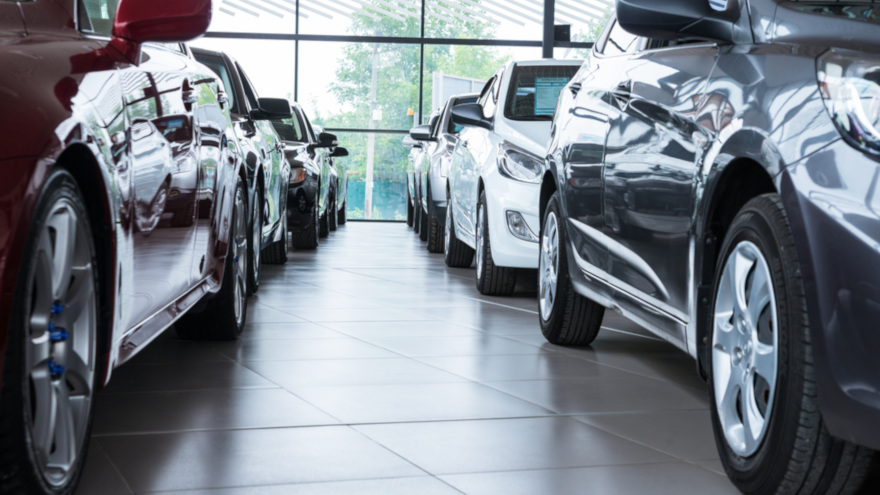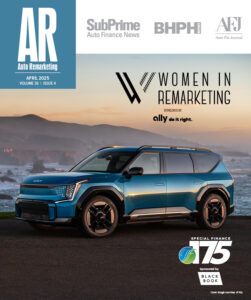Why used-car sales should remain at peak levels in 2019

It wasn’t the strongest of starts to the year for used-vehicle sales, but the first quarter closed with the pre-owned market poised to remain at peak levels.
The annualized rate of used-car sales in March was more than 39.5 million*, beating year-ago figures by roughly 200,000 units, Cox Automotive manager of economic and industry insights Zo Rahim said during a conference call on Cox Automotive’s Q1 Market Review.
(*This is a measure of annualized numbers, which provides a trailing 12-month view of sales, Cox Automotive clarified. This is different than the seasonally adjusted annualized rate, commonly referred to as SAAR)
There were 38.6 million used-car sales in 2016, followed by 39.4 million in 2017 and an estimated 39.5 million in 2018, according to the data provided by Cox Automotive.
It is forecasting 39.5 million used-car sales again this year, followed by 39.2 million in 2020.
“Like new, we started the year soft for used-vehicle sales but have since rebounded as we kick off the spring selling season and demand comes into the market,” said Rahim. “It is important to note that we expect total wholesale volumes to be down slightly this year, so supply constraints will impact used sales more than demand.
“The used-vehicle market is not expected to grow in 2019, as we peak into a plateau,” Rahim said. “But keep in mind, we expect 2019, like 2018, to be the strongest used environment of this expansion.”
In his Auto Market Weekly Summary to open April, Cox Automotive chief economist Jonathan Smoke wrote, “Tax refunds are powering a strong used-car market, especially for affordable vehicles.”
Some say pre-owned will ‘strengthen and grow’
The forecast was even more robust over at Edmunds. It pegged 2018 used-car sales at 40.2 million, a sum it anticipates will climb.
“Used vehicles have finally emerged as a compelling alternative to new, and market factors in 2019 will only increase their appeal,” Edmunds said in its Used Vehicle Outlook 2019 report. “Growing new-vehicle transaction prices and an oversupply of used vehicles have expanded the savings advantage in pre-owned vehicles.
“Additionally, consumers give up less going the used route since late-model cars are rich in technology and come in the body styles,” it said.
Edmunds later added: “While the new-vehicle market is expected to fall below 17 million sales for the first time in five years, we expect used-vehicle sales, which crossed 40 million units in 2018, to strengthen and grow.”
Edmunds was projecting late last month there would be 3.7 million used-car sales in March, up from 3.5 million in February. The resulting SAAR would be 39.2 million, compared to 39.3 million a month earlier.
Impact of prices, interest rates & payments
In an analysis of first-quarter car sales, National Automobile Dealers Association senior economist Patrick Manzi discussed pricing and payment differences between new and used cars.
Citing January’s NADA Average Dealership Financial Profile Series report, new-car transaction prices were up 3.3 percent year-over-year at $36,410, he said. Granted, used-car transaction prices for franchised dealers are up, too: In January, they were $20,797, a 4.3-percent hike, Manzi said.
But he noted that, “The average monthly payment gap between new and used vehicles continues to increase, which will likely result in more consumers shifting to the used market.”
Later, looking at key trends for the remainder of the year, Manzi said: “Inventory levels of off-lease vehicles are expected to peak in the coming months, but there will still be a steady supply over the next few years. As prices continue to climb on the new-vehicle side, more and more consumers will consider the used-vehicle market.
“The Fed has signaled that we may not see any interest rate increases in 2019. This will help slow the monthly payment creep that we saw in 2018. Payments will still likely increase throughout the year because of rising vehicle costs, but we won’t have the added pressure of cost increases coming from rising interest rates,” he said. “We have seen credit standards tightening in recent months with a larger share of auto loans being made to more credit worthy customers. We expect that this will continue throughout the year as well.”
Along similar lines, Edmunds points out in its outlook report that the gap between new- and used-car prices has grown at the same time that their difference in interest rates has declined.
There was a 56-percent difference ($11,398) between the average price of a new vehicle and that of a used vehicle back in 2013, Edmunds said. Last year, that difference was 62 percent ($13,705).
Meanwhile, the gap between the respective interest rates of new vehicles and used vehicles has declined each year since 2012, Edmunds said, falling from 4.0 percentage points seven years ago to 2.7 percentage points last year.
“The historically low interest rates of the post-recessionary period have slowly come to an end,” Edmunds said in its report. “New-car interest rates jumped 17 percent (or 0.8 point) in 2018 — rising from an average interest rate of 4.9 percent in 2017 to an average of 5.7 percent in 2018.
“Rates for used vehicles have risen at a slower clip, with interest rates increasing 9 percent in the same period,” it continued. “Although average rates for used vehicles will always be higher than for new, the lack of subsidized finance programs in the new-car market has narrowed the gap between interest rates for the two segments.”

 View The Latest Edition
View The Latest Edition

